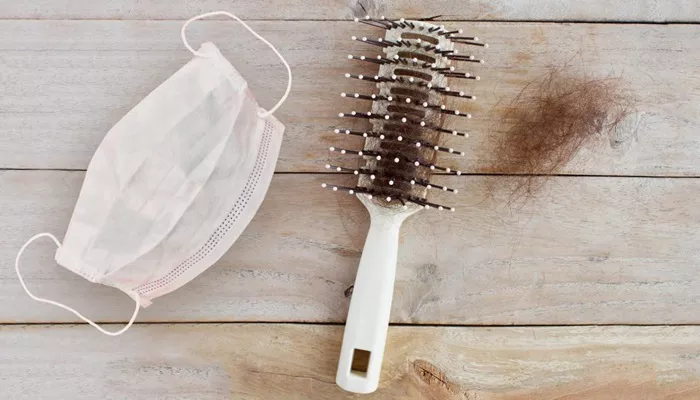Hair loss can be distressing, and many people notice a significant increase in hair shedding during the fall. While it’s normal to lose some hair every day, a noticeable uptick in hair loss during autumn can be alarming. This phenomenon, often referred to as seasonal hair loss, is a common experience for many. Understanding why this happens can help alleviate concerns and guide you toward managing this seasonal change effectively.
Understanding Seasonal Hair Loss
The Hair Growth Cycle
To understand why you might lose more hair in the fall, it’s essential to know about the hair growth cycle. The hair growth cycle consists of three main phases:
Anagen (Growth Phase): This phase lasts between 2 to 7 years. During this time, hair actively grows from the follicles.
Catagen (Transitional Phase): This short phase lasts about 2 to 3 weeks. Hair growth slows, and the hair follicle shrinks.
Telogen (Resting Phase): This phase lasts around 3 months. Hair does not grow during this period but remains attached to the follicle. At the end of this phase, hair naturally falls out, and new hair begins to grow.
Telogen Effluvium and Seasonal Hair Loss
Telogen effluvium is a condition characterized by the shedding of hair during the telogen phase. Several factors can trigger telogen effluvium, including stress, hormonal changes, and seasonal variations. In the fall, a significant number of people experience an increase in telogen hairs, leading to more noticeable hair loss.
Why Hair Loss Increases in the Fall
Summer Sun Exposure
During the summer, exposure to the sun increases, leading to higher levels of ultraviolet (UV) radiation. UV radiation can damage hair and scalp, accelerating the transition of hair follicles from the anagen phase to the telogen phase. By the time fall arrives, the hair follicles affected during the summer reach the end of the telogen phase and begin to shed.
Hormonal Changes
Hormones play a crucial role in the hair growth cycle. During the fall, hormonal fluctuations can occur, influenced by changes in daylight and temperature. These fluctuations can trigger an increase in the number of hair follicles entering the telogen phase, resulting in more hair shedding.
Temperature and Weather Changes
The transition from summer to fall brings cooler temperatures and lower humidity. These changes can affect the scalp’s health and moisture balance. A dry scalp can lead to hair breakage and increased shedding. Additionally, the body’s response to colder weather can include a shift in blood circulation, prioritizing essential organs over hair follicles, which may contribute to hair loss.
SEE ALSO: Does Cod Liver Oil Cause Hair Loss?
Other Contributing Factors
Nutritional Deficiencies
Nutritional deficiencies can exacerbate hair loss, particularly if the diet lacks essential vitamins and minerals. Key nutrients for healthy hair include:
Biotin (Vitamin B7): Essential for hair strength and growth.
Iron: Crucial for transporting oxygen to hair follicles.
Vitamin D: Supports hair follicle cycling.
Zinc: Aids in tissue growth and repair, including hair follicles.
A diet lacking these nutrients can contribute to increased hair shedding, especially during seasonal transitions.
Stress and Anxiety
Seasonal changes can also bring about increased stress and anxiety. Stress is a well-known trigger for telogen effluvium, as it can disrupt the hair growth cycle and push more hair follicles into the telogen phase. The psychological impact of noticing more hair shedding can further exacerbate stress, creating a cycle of increased hair loss.
Managing Seasonal Hair Loss
While seasonal hair loss is generally temporary, there are several strategies you can adopt to manage and minimize hair shedding during the fall.
Maintain a Healthy Diet
Eating a balanced diet rich in essential nutrients can support healthy hair growth. Incorporate foods high in vitamins and minerals such as:
Leafy greens (spinach, kale): High in iron and vitamin C.
Nuts and seeds (almonds, flaxseeds): Rich in biotin and zinc.
Fish (salmon, mackerel): Excellent sources of vitamin D and omega-3 fatty acids.
Scalp Care
Taking care of your scalp is crucial for healthy hair growth. Consider the following tips:
Regular Scalp Massages: Improve blood circulation to hair follicles.
Hydrating Shampoos and Conditioners: Maintain scalp moisture and prevent dryness.
Avoid Harsh Hair Products: Minimize the use of products with sulfates and alcohol that can dry out the scalp.
Reduce Stress
Managing stress is essential for overall health, including hair health. Practice stress-reducing activities such as:
Meditation and Yoga: Promote relaxation and reduce anxiety.
Regular Exercise: Improves blood circulation and reduces stress hormones.
Adequate Sleep: Ensures the body can repair and regenerate, including hair follicles.
When to Seek Professional Help
While seasonal hair loss is typically temporary, there are instances where it may be necessary to seek professional help.
If you notice the following, consider consulting a dermatologist or a trichologist:
Excessive Hair Shedding: Losing more than 100 hairs per day consistently.
Bald Patches: Noticeable thinning or bald spots.
Other Symptoms: Scalp itching, redness, or pain.
A professional can conduct a thorough examination and provide personalized recommendations or treatments to address your hair loss concerns.
Conclusion
Seasonal hair loss in the fall is a common experience influenced by factors such as UV exposure, hormonal changes, and weather variations. Understanding the hair growth cycle and the reasons behind increased hair shedding can help you manage and minimize its impact. By maintaining a healthy diet, practicing good scalp care, and reducing stress, you can support your hair’s health and reduce the effects of seasonal hair loss. If hair loss becomes severe or persistent, seeking professional advice is essential to address underlying issues and ensure the best possible care for your hair and scalp.

